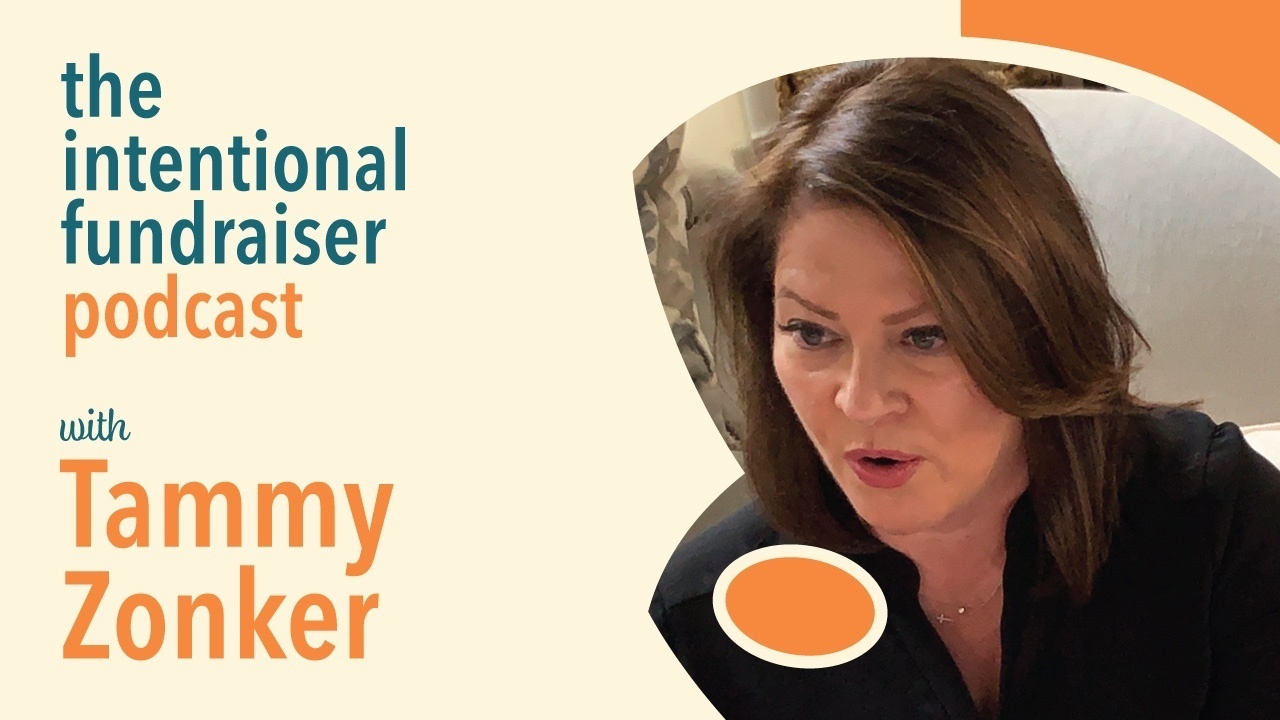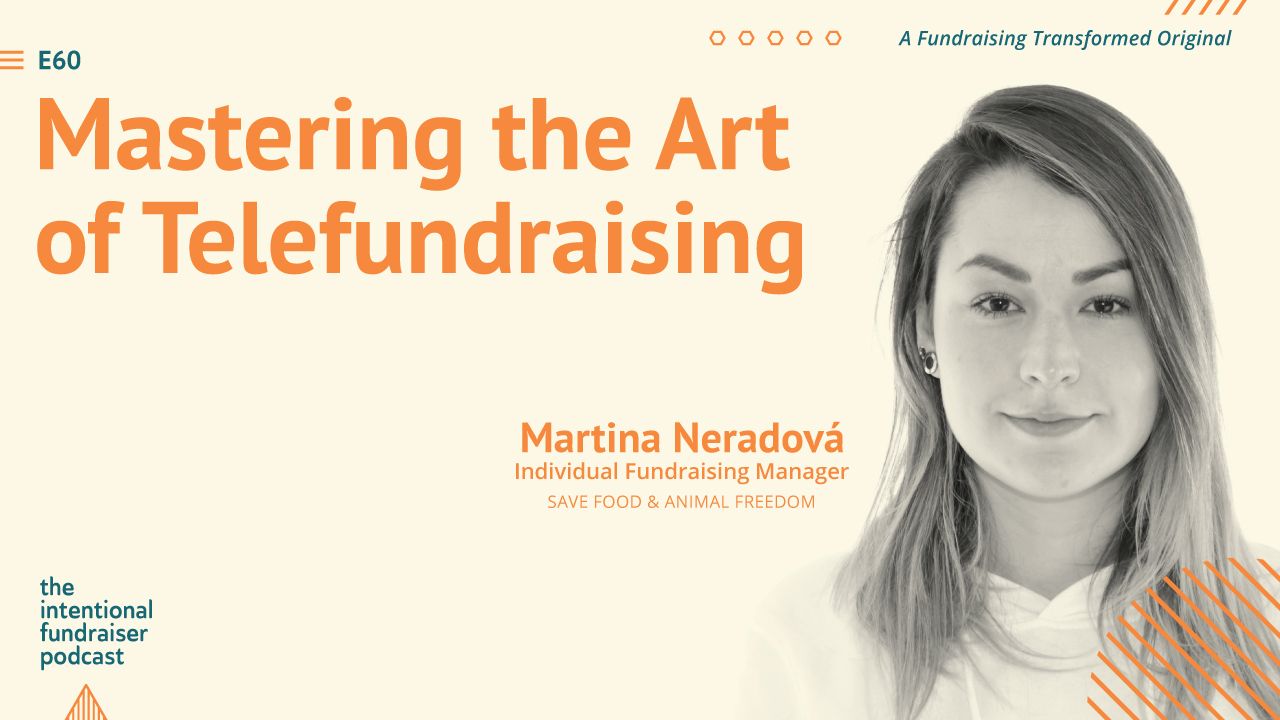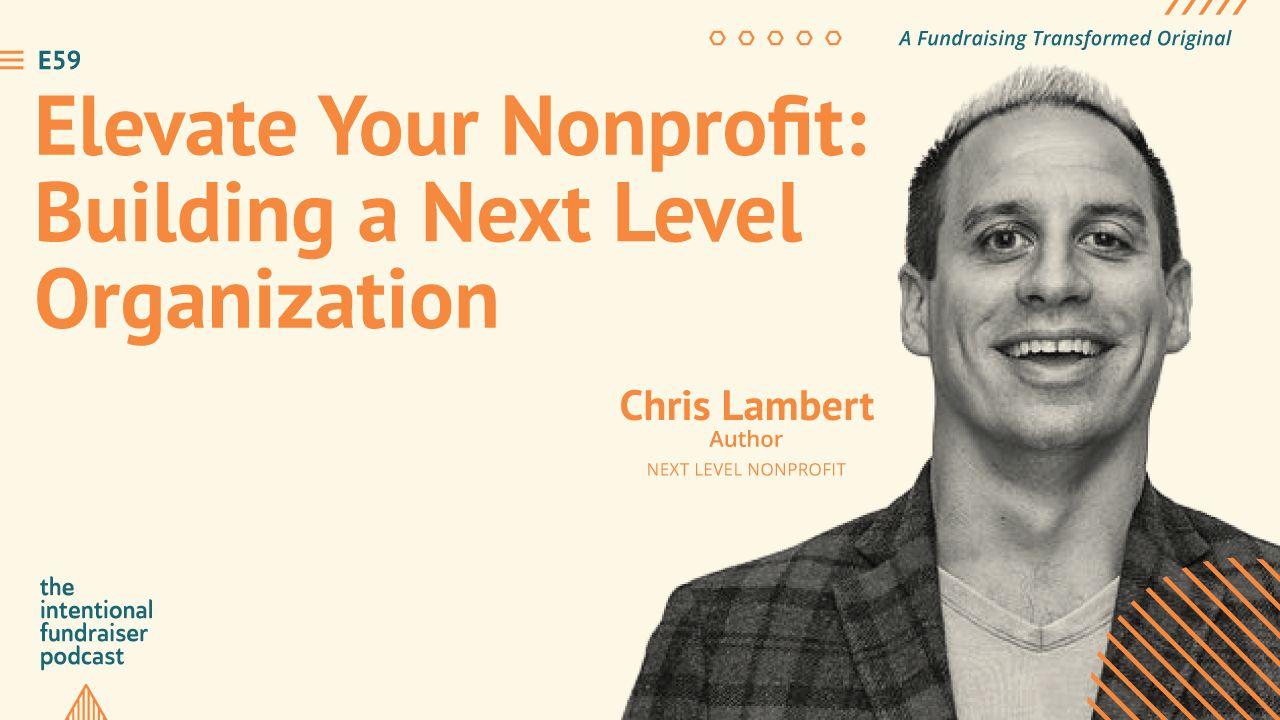2. About Your Case for Support

Listen now
About this episode
Today we’re talking about your Case for Support. A critically important tool in every organization’s fundraising toolkit.
Fundraising legend, Jerry Panas had a lot to say about the Case for Support.
“People give to the magic of an idea.”
“People give to audacious dreams.”
Of course, Jerry Panas was an internationally recognized leader and best-selling author in the field of fundraising and philanthropy. He passed in 2018 at the age of 89. But his legacy and influence are alive and well.
A case for support, in its simplest form, is a philanthropic investment prospectus. A document that tells prospective donors or supporters (if you prefer) what your nonprofit organization hopes to accomplish with the donor’s philanthropic gifts.
A case for support may be for capital or a capacity-building campaign.
It could be for a special project.
It could be a case for support to sustain your day-to-day operations and delivery of your core services.
A well-written case for support must answer the following questions:
- What you do and why it matters (in a compelling and emotional manner)
- Why are you the organization to address this matter?
- Why now?
- Why me? (your potential or probably donor)
Rate and review on Apple Podcasts
“I love Tammy and The Intentional Fundraiser Podcast” 👈 If that sounds like you, please consider rating and reviewing my show! This helps me support more fundraisers — just like you — become better fundraisers, faster. Click here, scroll to the bottom, tap to rate with five stars, and select “Write a Review.” Then, let me know what you liked most about this episode or about our podcast in general.
Subscribe to this podcast
Also, if you haven’t done so already, subscribe to the podcast. I’m adding a bunch of bonus episodes to the feed and, if you’re not following, there’s a good chance you’ll miss out. Subscribe now!
Connect with Tammy Zonker on social
You can also connect with Tammy on Twitter and Instagram at @tammyzonker, and on LinkedIn.
We can help you take your fundraising results to the next level
To get started, learn more about joining our exclusive Fundraising Transformers community.
Read full episode below
Recent research findings from the Institute for Sustainable Philanthropy, co-founded by Dr. Adrian Sargeant reports that 71% of survey participants believe they have a strong and compelling case for support. Of course, that means 29% do NOT believe they have a strong and compelling case for support. But for now, let’s focus on the 71% who say they DO.
When the research drills deeper into the specific components of the case for support – respondents are not nearly as confident.
57.9% of respondents believe their case for support focuses on “why we do this work” (meaning the clear and compelling reason for the work – why it matters)
Only 55% believe their case for support answers the question, “Why are you the organization to address this matter?” Your unique value proposition….
Only 59% believe their case for support is deeply emotional.
When we step back and really look at the numbers, something doesn’t compute. The average self-assessment rating on the individual components of the case for support is strong is 57.3%
And yet, 71% of survey respondents believe they have a clear and compelling case for support.
I’m not questioning the integrity of Dr. Sargeant’s research AT ALL. I’m questioning how accurately WE assess our own work. In this case, the quality of our case for support. Are we fooling ourselves?
There’s a well know truism in the marketing and branding world that says, “It’s not who YOU say you are. It’s who THEY say you are.” Maybe this truism applies to our cases for support as well.
Maybe we have an over-inflated assessment of how great our cases for support are. Maybe our cases for support really aren’t that great – and maybe it has a direct impact on our donor retention rates. Which are pretty dismal here in the U.S. On average we have about a 46% overall donor retention rate, and a 20% retention rate with first-time donors.
Maybe it’s time to revisit our case for support with a beginner’s mind. Crafting every word like a love letter to our donors and probable supporters. Writing it like a promise to those we serve. Compelling. Passionate. Emotional. Feels right. Makes sense. Head and heart, together.
Let’s revisit the key elements of your case for support. And some common mistakes.
What we do and why it matters.
Does your case for support focus on the past? Is it a historical dissertation on the founding of your organization? That’s not good. Like I always say, people applaud the past – but they FUND the future!
Is it all about you? Your organization? “WE do this and WE do that. Aren’t WE great? Give us your money!”
Your case for support should be about the intended impact on those you serve and the community, thanks to caring and generous donors.
Why are we the ones to do this work?
What’s special about the work you do? What’s your theory of change? Your service delivery model? What’s your unique value proposition? If you work in children’s mental health, perhaps your unique value proposition is that clinicians are all certified in trauma-informed care. If you’re a youth theatre, perhaps your theory of change is centered on leadership and character development first, and performance second. If you’re a health foundation, perhaps you’re treating the WHOLE person – physical health, mental and emotional health, spiritual health.
I’ll tell you what doesn’t make you special. You’re not special because of your people. Yes, you have very special people on your team. But everyone says that “What sets us apart, are our people.” That’s white noise in today’s world. It’s the all-too-often default, easy-button when asked what makes your organization special or unique.
Why now?
In our pandemic world, with unprecedented basic needs….like healthcare, food, shelter…
In a world where awareness and out-rage about social injustices and inequities are rising….
In a world where evidence of a global climate crisis is striking closer and closer to home…
– you need to convey a sense of urgency to your donors and probable supporters.
But ‘what if’ you aren’t an essential” type of organization?
What if you’re an arts organization, or a humane society/animal rescue organization or a museum? How do you capture the attention of your donors or probable supporters?
You too can create a sense of urgency. Let me give you a couple of examples:
“At a time when youth suicide rates are rapidly rising across the U.S., our youth theatre provides an outlet for creative expression. A safe place to be, to belong, to connect in a caring community of creatives.”
Or
“It’s not just about our planet getting warmer and icebergs melting. It’s about the rapidly increasing rate of droughts, forest fires, hurricanes, and other natural disasters ravaging our communities and devastating families. We must find and scale a solution. Our very lives depend on it.”
Why me? (the donor)
This is our opportunity to connect directly to our donor or probable donor’s deeply held values. Their identity. According to Dr. Jen Shang, co-founder of the Institute for Sustainable Philanthropy, the world’s only philanthropic psychologist and Dr. Adrian Sargeant’s better-half….
There are 9 adjectives that Americans use to describe a moral person:
- Kind
- Caring
- Compassionate
- Helpful
- Friendly
- Fair
- Hard-working
- Generous and
- Honest
When crafting your case for support message about, “why me?” – the donor - select a couple of adjectives from this list. Weave them into your case for support strategically. Allowing the donor or a probable donor to reflect on who they believe themselves to be or aspire to be.
Tom Ahern, one of the most prolific fundraising copywriters of all time.. was featured in the New York times with an appeal for Sharp HealthCare systems. An excerpt from the appeal read:
“You came to our hospital as a patient, in need of help. Thank you for that profound act of trust. Now we come to you, humbly, to ask for your help in return. The cause for excellent healthcare, here in our community, needs you. Will you consider becoming its champion… by making a gift?”
This letter has been used for 10 years with slight tweaks and has brought in more than 35,000 donations ranging from $1 to $20,000. Its tone and wording make the connection between giving and the “innermost perceptions of who they are as a person.” Identity. Why you.
Okay, so if I’ve been successful, you’re thinking you may need to blow the dust off your case for support. Perhaps it’s time to refresh it… or throw it out and start from scratch… or for some of you… it’s time to thoughtfully, strategically, and intentionally, write your case for support for the very 1st time.
After all, your case for support is the Rosetta Stone of your fundraising strategy. I’m sure you’ve heard a reference to the “Rosetta Stone” before. No, it’s not just an app to help you learn a foreign language quickly and efficiently.
The Rosetta Stone is a large stone found in 1799 by soldiers in Napoleon’s army, near Rosetta on the West Nile in Egypt. Carved into this stone were parallel inscriptions in Greek, Egyptian hieroglyphics, and Demotic characters (cursive Egyptian). The Rosetta Stone essentially became the secret decoder ring for translating hieroglyphics.
Your case for support is the Rosetta Stone of your fundraising program. Whether you’re preparing a proposal for a grant funder or an individual major donor. Whether you’re writing copy for the website or an impact report. Creating a multichannel appeal or a monthly giving program. The case for support is the source document, the cornerstone, the Rosetta stone from which you begin. Your case for support informs all donor communication.
It’s not the only information you need, but it’s the main ingredient. You still need stories, gift strings, booster statements, impact statements, maybe a budget – depending on the project. But the case for support is the main ingredient.
I’m a baker. I love to bake with my 3-year-old grandson, Hudson. So indulge me as I use a baking analogy. If you want a delicious, beautiful, fragrant loaf of bread (you know, crusty on the outside, warm and soft on the inside) you need flour. But you also need yeast, sugar, butter, and eggs….
You get the point. The case for support is not a stand-alone document. You can’t make the bread just flour. And you can’t maximize fundraising without a clear, compelling, and emotional case for support.
So why do so few organizations have a current case for support? When I’m conducting fundraising effectiveness assessments for clients, I often find that they have a case for support for a current or past capital campaign. They may even have a case for support for a specific program, (generally because a grant funder required it). But they typically don’t have that clear, compelling, emotional, and urgent case for support for their overall organization.
They more than likely don’t have a case for support that puts forth a Jerry Panas-worthy audacious dream, there’s no magical, transformational vision. And as a result, those organizations struggle to maximize their fundraising potential. They are slow to attract and even slower to retain donors.
There’s a short, funny story I heard once. There was a nonprofit fundraising pro, working for an organization doing good work in the community. He managed a portfolio of major donors, generous caring people. Among those supporters, he had his “go-to” donor. You know the one, the donor who always steps up to support a special project. Fills the gap if there’s a funding need that’s short of goal… $10,000 here, $5,000 there. Amazing. I hope each of you has a “go-to” donor or two!
One day our fundraiser opens the morning paper and sees a feature story with a photo of “his” donor. He made a $1Million dollar gift to another organization. Our fundraiser was gobsmacked! And more than a little hurt. Well, he pouted around the office all morning, and finally, by afternoon he mustered up the courage to call the donor. The donor picked up on the second ring.
“Congratulations,” said our fundraiser, “I saw the paper this morning – how wonderful for you and them. But, I have to ask… why them, why not us?” I mean, you always step up when we have a need. I know you love our mission and believe in us... why them?”
“Very simple my friend. You never brought me a million-dollar idea.”
People give to the audacity of a dream.
People give to the magic of an idea.
What’s your audacious dream, what’s your magical idea?
What do you do, and why does it matter?
What difference do you make in your community, region or the world?
Why are YOU the ones to do this work?
Why you, what’s your unique value proposition?
Why do you need me? How do my values and identity align with your vision? Your audacious dream?
I know we’re in the fourth quarter of the year.
The most generous time of the year.
The busiest time of the year for fundraisers.
You may be thinking, Tammy – I’m waaaay too busy to write or re-write my case for support or bake bread!!
I’m scheduling major donor visits and preparing proposals.
I’m working on my year-end multichannel appeal.
We’re launching our donor thank-a-thon in 3 weeks (earlier for my Canadian friends)
Our gala is right around the corner.
Yes, my friends. I know. I have walked in your shoes, for 9 years I served as Chief Philanthropy Officer at The Children’s Center in Detroit – where we tripled fundraising results in the first three years. I get it.
As many of you know, I resigned from my position with The Children’s Center six months ago to devote my full attention to my business, Fundraising Transformed. I can tell you that by stepping away, I have gained even more clarity on the needle-moving strategies, activities, and tools needed to achieve higher levels of fundraising success.
A quality case for support is one of them. You don’t have time to step over this important cornerstone in your fundraising toolkit.
Now be warned….
When you start talking about audacious dreams, and magical, even transformational ideas, and making promises to those you serve. It will shake things up from top-to-bottom at your organization – especially if you aren’t already in the audacity business.
But start today. Find your most recent case for support. Read it word for word. Does it clearly communicate what you do and why it matters in human terms? Without academic language and jargon?
Does it convey urgency? What will likely happen if we don’t solve this problem or meet this need?
Is there a clear opportunity for the current or probable supporters to make a difference?
Does it inspire you? If it doesn’t inspire you, it surely won’t inspire others.
You can do this. I believe in you and your ability to transform your fundraising. So you can transform the world.
Subscribe to this podcast
Also, if you haven’t done so already, subscribe to the podcast. I’m adding a bunch of bonus episodes to the feed and, if you’re not following, there’s a good chance you’ll miss out. Subscribe now!







